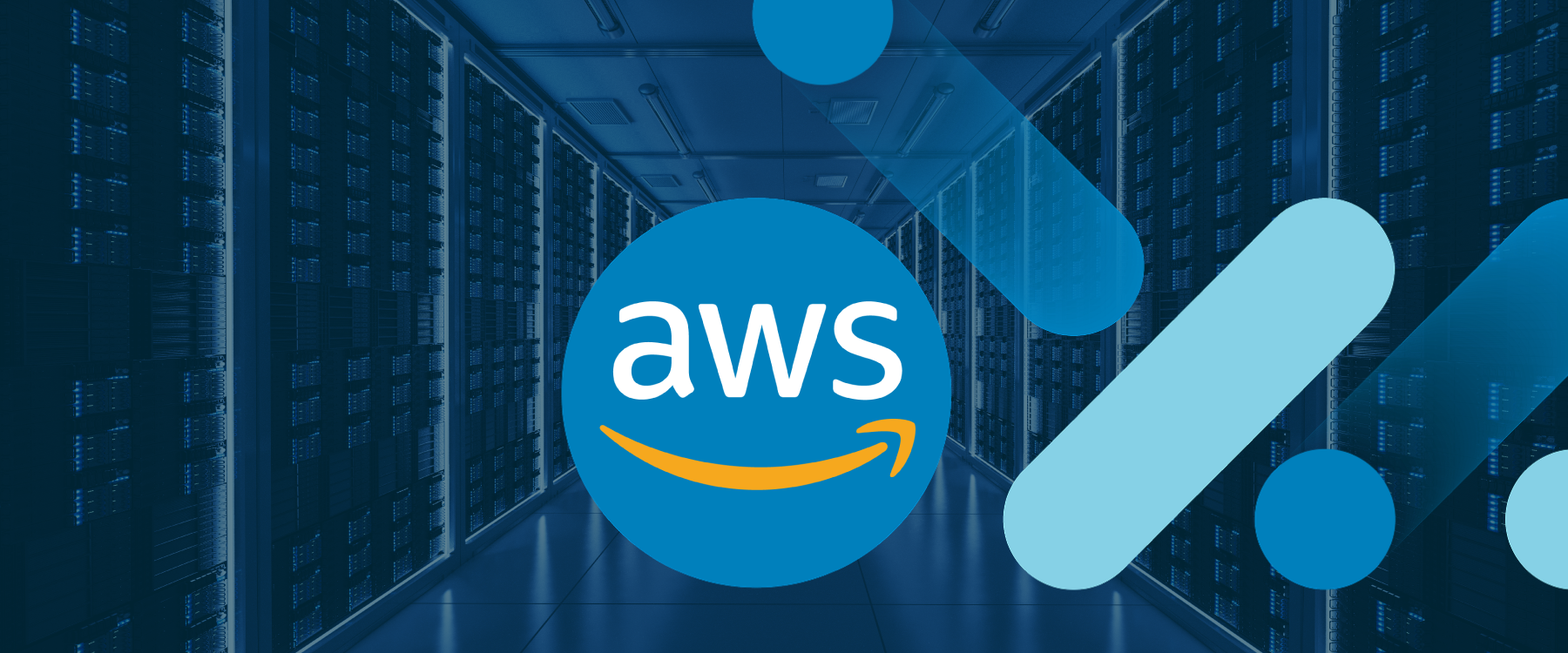DDoS attacks are a serious threat to your network security. They can disrupt your operations and harm your business reputation. These attacks have become increasingly sophisticated and can overwhelm your network resources within just a few minutes. That’s why it’s crucial to have strong DDoS attack protection for your digital infrastructure.
This guide will help you understand DDoS protection solutions and how to safeguard your organization, including:
- The different types of DDoS attacks that target modern networks
- The key features of effective protection systems
- The various kinds of solutions available, including cloud-based and hybrid approaches
- Real-world strategies for implementing DDoS protection in your security framework
Understanding DDoS Attacks
Whether you’re a small business owner or managing large-scale operations, DDoS protection should be top-of-mind for maintaining uninterrupted service delivery and protecting your digital assets.
Managed desktop solutions can improve your operational efficiency while adding an extra layer of security against DDoS attacks. SaaS security solutions can also provide further insights into protecting your digital assets effectively. Remember that successful DDoS protection requires a comprehensive understanding of these elements and their application in real-world situations.
DDoS attacks have evolved from simple flooding techniques to sophisticated multi-vector assaults that can damage even well-defended networks. Your business faces threats from amateur attackers using DDoS-for-hire services and professional cybercriminals employing advanced attack methods. These attacks come in three primary forms, each targeting different aspects of your network infrastructure:
[wpdatatable id=7 table_view=regular]
A successful DDoS attack can immediately affect your business operations, including service downtime (ranging from hours to days), compromised data integrity, and lost revenue from interrupted operations. Furthermore, the average cost of a DDoS attack is $20K per hour of downtime. In the long term, your business may face diminished brand reputation, legal liabilities, and increased security infrastructure costs.
Mitigate Risk with DDoS Attack Protection Solutions
The breadth and depth of DDoS attacks continue to rise, making professional protection services essential for businesses of all sizes. DDoS attack protection solutions serve as your first defense against these security threats—and the investment directly impacts your business continuity strategy.
Modern protection solutions offer sophisticated detection mechanisms and mitigation techniques that adapt to evolving attack patterns. Your network remains operational even under severe attack conditions, maintaining critical business functions and protecting your digital assets. A robust cloud DDoS protection service provides:
- Real-time threat monitoring and automated response capabilities
- Traffic filtering to maintain service availability during attacks
- Protection across multiple network layers
- Scalable resources to handle varying attack sizes
Working with established DDoS protection service providers ensures your organization maintains operational resilience against increasingly sophisticated cyber threats. Some additional considerations:
- Engage with a managed service provider to further enhance your cybersecurity posture.
- Implement offsite backups to provide an extra layer of security and data recovery options in the event of a successful attack.
- Have a service level agreement for hosting, which can provide greater control over your resources and enhance security.
- Leverage managed application hosting to free your development team from the burden of server administration, allowing them to focus on more critical tasks while ensuring that your applications are better protected against potential threats.
- Implement strong endpoint security measures to safeguard your network by addressing vulnerabilities that could be exploited during an attack.
Lastly, don’t overlook the importance of email security in your overall defense strategy. Email security solutions can help protect your organization from phishing attempts and other email-borne threats often accompanying DDoS attacks. Remember, staying one step ahead of potential threats requires a proactive approach to security; adopting these strategies as part of your overall defense plan is imperative.
Key Features to Look for in Effective DDoS Attack Protection Solutions
Selecting the right DDoS protection solution requires understanding critical features safeguarding your network infrastructure. These essential components create a robust defense system against evolving cyber threats.
1. Real-Time Traffic Analysis
Your DDoS protection solution should incorporate advanced detection methods to identify and respond to threats within seconds. Modern systems use sophisticated algorithms to analyze traffic patterns, creating detailed profiles of normal network behavior. This baseline allows the system to spot irregularities quickly and accurately. Effective solutions employ multiple detection techniques:
- Signature-based Detection: Identifies known attack patterns
- Heuristic Analysis: Spots suspicious behavior patterns
- Statistical Anomaly Detection: Flags deviations from normal traffic
- Protocol Analysis: Verifies compliance with standard protocols
These detection mechanisms work in tandem with automated mitigation responses, creating a seamless defense system that simultaneously handles multiple attack vectors. The ability to distinguish between legitimate traffic spikes and malicious attacks is crucial for maintaining business continuity while under attack.
2. Multi-Layer Protection Mechanisms
DDoS attacks can target different layers of the network stack, which is why multi-layer protection is essential. Your solution should include defenses at the transport layer (Layer 3/4) and the application layer (Layer 7) to mitigate various attacks effectively. Here are some key protection mechanisms to look for:
- Layer 3/4 protection against volumetric attacks
- Layer 7 defense for application-targeted threats
- DNS amplification attack mitigation
- SSL/TLS attack protection
3. Smart Response Systems
Your DDoS protection solution should include proactive measures and intelligent response systems. These systems ensure that when an attack does occur, appropriate actions are taken swiftly to minimize its impact. Here are some features that contribute to smart response capabilities:
- Automated threat scoring algorithms
- Dynamic traffic rerouting capabilities
- Granular filtering rules
- Custom threshold configurations
4. Traffic Profiling and Analysis
Understanding your network’s normal traffic patterns is crucial for effective DDoS mitigation. Establishing baseline profiles through traffic profiling and analysis can help you better identify anomalies during an attack. Consider these techniques for profiling and analyzing your traffic:
- Machine learning-based anomaly detection
- Behavioral analytics for pattern recognition
- Historical traffic analysis
- Customizable alert thresholds
5. Adaptive Defense Strategies for Evolving Attacks
DDoS attacks constantly evolve, requiring protection solutions that adapt in real time. A hybrid approach combining local resources with cloud capabilities creates a robust defense against sophisticated attacks. Key adaptive defense mechanisms include:
- Dynamic traffic profiling: Systems learn normal traffic patterns and automatically adjust thresholds based on historical data
- Multi-vector detection: Protection against simultaneous attacks using different methods
- Automated response scaling: Resources automatically scale up during attack spikes
- Real-time signature updates: Protection rules update automatically as new attack patterns emerge
The integration of on-premises defenses with cloud capabilities provides several advantages. For starters, local hardware handles immediate threats, while cloud resources manage large-scale attacks. Also, there is reduced latency through edge protection, seamless failover between local and cloud defenses, and overall more cost-effective resource allocation.
Advanced adaptive mechanisms in action:
- Machine learning algorithms analyze traffic patterns to predict and prevent attacks
- Behavioral analytics identify and block suspicious activity before it escalates
- Smart rate limiting adjusts automatically based on server capacity and current traffic conditions
- Automated blacklisting of malicious IP addresses with continuous updates
These adaptive strategies work together to create a dynamic shield that evolves alongside new threats, ensuring continuous protection against emerging attack vectors.
6. Intelligent Traffic Management During an Attack
Intelligent traffic management acts as your network’s air traffic controller during DDoS attacks. The system employs zero-atrophy blocklists to create an initial defense barrier, automatically identifying and blocking known malicious IP addresses and attack patterns.
Intelligent traffic management’s effectiveness lies in its ability to scale protection based on attack volume, maintain service quality for legitimate users, preserve network resources, and provide detailed attack analytics for post-incident analysis. Custom rules and policies allow you to tailor protection levels to your specific network requirements, ensuring optimal performance while maintaining robust security measures.
Advanced Traffic Management Systems
Advanced traffic management systems use automated profiling to create baseline traffic patterns, detect anomalies in real time, filter suspicious traffic without disrupting legitimate users, and adjust protection levels based on threat severity.
Automated Traffic Diversion Strategies
Your DDoS protection solution should implement automated traffic diversion strategies:
- Traffic Scrubbing: Redirecting suspicious traffic through cleaning centers
- Rate Limiting: Controlling the flow of incoming requests
- Geographic-based Filtering: Blocking traffic from high-risk regions
- Protocol-specific Controls: Managing different types of network traffic
These automated systems reduce response times from hours to seconds, which is critical for maintaining service availability during attacks. Modern solutions integrate machine learning algorithms to adapt to new attack patterns and minimize false positives.
7. Global Threat Intelligence Networks for Proactive Defense
Global threat intelligence networks are an essential part of modern DDoS protection strategies. In real time, they gather and analyze information about attack patterns, malicious IP addresses, and emerging threats from various sources worldwide.
The Power of Threat Intelligence
Threat intelligence networks improve security through real-time signature updates, automated blacklist management, dynamic rule adjustments, and behavioral analysis refinement. The strength of threat intelligence lies in its ability to:
- Predict Attack Patterns: By examining past data and current trends, organizations can foresee potential threats before they happen.
- Identify Attack Sources: Determine specific geographical areas and networks that are often associated with DDoS attacks.
- Track Attack Tools: Keep an eye on new DDoS tools and techniques being developed by cybercriminals.
Organizations that utilize global threat intelligence can take proactive steps based on attack trends observed in various regions and industries. When an attack pattern is detected in one location, other connected networks receive immediate updates to bolster their defenses.
The collaborative aspect of these networks creates a multiplier effect—each participating organization gains from the combined security experiences of the entire network. This shared knowledge base allows for quick responses to zero-day attacks and emerging DDoS variants, giving organizations a significant advantage in the ongoing fight against cyber threats.
Exploring Different Types of DDoS Protection Solutions Available
DDoS protection solutions come in various forms, each designed to meet specific organizational needs and security requirements. Your choice of protection method directly impacts your defense capabilities against evolving cyber threats.
1. Cloud-Based DDoS Protection Services
Cloud-based DDoS protection services represent a powerful shield against cyber attacks. These solutions leverage vast networks of data centers to absorb and filter malicious traffic before it reaches your infrastructure.
Key advantages of cloud DDoS protection:
- Unlimited Scalability: Cloud services automatically scale to handle attacks of any size
- Cost-Effective Implementation: No need for expensive hardware investments
- Rapid Deployment: Quick setup and immediate protection
- 24/7 Expert Management: Professional monitoring and response teams
- Global Coverage: Protection across multiple geographic locations
Leading cloud DDoS protection providers offer features such as traffic scrubbing centers worldwide, real-time attack analytics, custom rule creation, API integration capabilities, and multi-layer protection strategies.
 The cloud-based approach is ideal for businesses with:
The cloud-based approach is ideal for businesses with:
- Multiple geographic locations
- Variable traffic patterns
- Limited internal security resources
- Need for rapid scalability
- Budget constraints for hardware investments
Real-world applications include:
- E-commerce platforms during high-traffic seasons
- Gaming services requiring low-latency protection
- Financial institutions handling sensitive transactions
- Media streaming services with global audiences
Cloud DDoS protection services integrate seamlessly with existing infrastructure, providing a robust defense mechanism without compromising performance. These services analyze traffic patterns, identify potential threats, and filter malicious requests before they impact your systems.
The market offers various cloud DDoS protection options, from basic traffic filtering to advanced solutions with machine learning capabilities. Your choice depends on factors like traffic volume, security requirements, and budget constraints.
Managed services can play a crucial role for organizations looking to optimize their IT spending while securing their digital assets. Such services streamline operations and provide the necessary expertise to handle complex security challenges.
Ultimately, the goal is to build a resilient infrastructure that can withstand cyber threats while ensuring optimal performance. For enterprises considering a more comprehensive approach towards their cloud strategy, resources such as webinars on building hybrid clouds with Azure could provide valuable insights.
2. On-Premises Solutions
On-premises DDoS protection solutions offer direct control over your network security infrastructure. These hardware-based appliances sit at your network edge, providing immediate threat detection and mitigation capabilities.
Pros of on-premise solutions:
- Direct control over security policies and configurations
- Lower latency due to local traffic processing
- No dependency on internet connectivity for protection
- Compliance with data sovereignty requirements
- Immediate response to attacks without third-party involvement
Cons of on-premise solutions:
- Higher upfront costs for hardware and infrastructure
- Limited scalability during large-scale attacks
- Regular maintenance and updates required
- Need for specialized security personnel
- Fixed capacity based on hardware specifications
When to consider on-premises solutions:
- Operates in highly regulated industries
- Requires complete control over security infrastructure
- Has consistent traffic patterns
- Maintains sensitive data that must remain within physical premises
- Has sufficient IT resources and expertise
The effectiveness of on-premises solutions depends on your hardware capacity and the size of potential DDoS attacks. While these solutions excel at handling smaller, application-layer attacks, they might struggle with massive volumetric attacks that exceed their processing capabilities.
3. Hybrid Solutions
Hybrid DDoS protection solutions combine the strengths of cloud-based and on-premises defenses, creating a robust security shield for organizations with complex infrastructure needs. This dual-layer approach provides:
- Immediate Local Response: On-premises equipment handles instant threat detection and mitigation
- Scalable Cloud Protection: Cloud resources absorb large-scale volumetric attacks
- Customizable Security: Tailored protection for different parts of your network
- Cost Optimization: Strategic resource allocation based on threat levels
A notable success story comes from a major financial institution that implemented a hybrid solution during a series of targeted attacks. Their on-premises systems handled application-layer threats while cloud protection absorbed a 500 Gbps volumetric attack, maintaining 99.9% service uptime.
Real-world implementation benefits include:
- Protection for both internet-facing and internal applications
- Reduced latency through local traffic processing
- Enhanced visibility across the entire network infrastructure
- Seamless scaling during attack spikes
Organizations like CloudScale365 help businesses implement hybrid solutions by integrating local hardware with cloud-based protection services. This approach has proven particularly effective for companies with sensitive data requirements, allowing them to maintain control while leveraging the power of cloud-based protection.
Combat Complex Attacks with CloudScale365
Our versatile threat intelligence, cyber threat protection, and anti-DDoS services significantly increase the reliability of your organization’s online presence. CloudScale365 will deliver a free onboarding consultation for your security needs. Get in touch with our cybersecurity experts for the implementation of a versatile end-to-end security strategy for your organization.
FAQs (Frequently Asked Questions)
What are DDoS attacks and how do they affect businesses?
DDoS attacks, or Distributed Denial of Service attacks, are malicious attempts to disrupt the normal functioning of a targeted server, service, or network by overwhelming it with a flood of internet traffic. They can lead to significant consequences for businesses, including service disruption, financial loss, and damage to reputation.
Why is DDoS protection essential for network security?
DDoS protection is crucial for maintaining a secure network environment as it helps ensure continuous service availability and protects businesses from the risks associated with DDoS attacks. Without effective protection, organizations may face operational interruptions that could jeopardize their business continuity.
What key features should I look for in effective DDoS protection solutions?
When evaluating DDoS protection solutions, consider features such as advanced detection and mitigation techniques, adaptive defense strategies, intelligent traffic management during an attack, and access to global threat intelligence networks. These features enhance the ability to distinguish between legitimate and malicious traffic while providing rapid response capabilities.
What types of DDoS protection solutions are available?
There are several types of DDoS protection solutions available including cloud-based services, on-premises solutions, and hybrid approaches. Cloud-based services offer scalability and flexibility; on-premises solutions provide localized control; and hybrid solutions combine both methods for comprehensive protection tailored to organizational needs.
How do cloud-based DDoS protection services work?
Cloud-based DDoS protection services work by routing incoming traffic through a distributed network of servers that can absorb large amounts of data. This allows them to filter out malicious traffic before it reaches the target server, ensuring that legitimate users can access services without interruption.
What advantages do hybrid DDoS protection solutions offer?
Hybrid DDoS protection solutions leverage both cloud-based and on-premises resources to provide a robust defense against attacks. This approach allows organizations to benefit from the scalability of cloud services while maintaining local control over their security measures. It is particularly effective for organizations with diverse needs and varying levels of risk.



